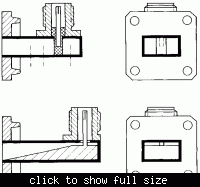Follow along with the video below to see how to install our site as a web app on your home screen.
Note: This feature may not be available in some browsers.

Right. Better suited means higher power capability, regarding thermal rating and by avoiding electrical arcing.htg said:Impedance matching should work independently of how much power is transmitted.